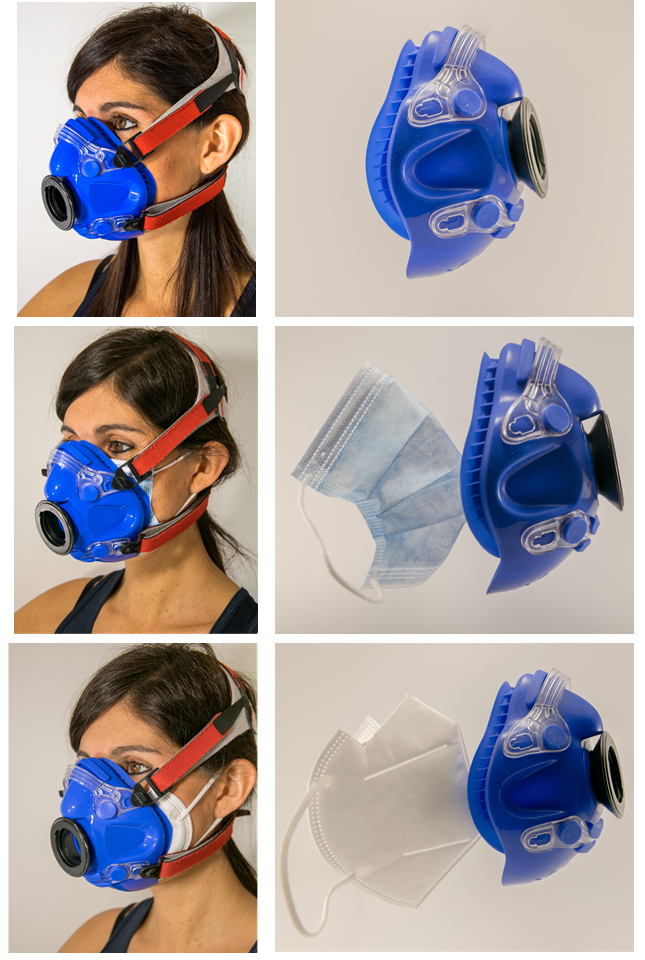Masks and exercise
According to a study recently published in the European Respiratory Journal, wearing a protective mask only has a modest effect on healthy people’s ability to perform vigorous exercise.
It is safe for healthy people to wear a mask during strenuous exercise
According to a study recently published in the European Respiratory Journal, wearing a protective mask only has a modest effect on healthy people’s ability to perform vigorous exercise.
Since the beginning of the COVID-19 pandemic, the use of face masks has been one of the most effective measures to contain the spread of the virus. However, the practicality and long-term tolerability of face masks are often questioned by the public and, despite their mandatory use, they are often worn ineffectively.
A study conducted by a team of Italian researchers, including Dr. Elisabetta Salvioni of the Monzino Cardiology Center (Centro Cardiologico Monzino, IRCCS) in Milan, Italy, Dr. Massimo Mapelli and Professor Piergiuseppe Agostoni of the Monzino Cardiology Center and the University of Milan, carried out detailed tests in a group of 12 healthy people during exercise.
The authors found differences in some measurements between wearing and not wearing a face mask during exercise, but none of their results indicated any health risk. This suggests that face masks could be worn safely during strenuous exercise, for example to reduce the transmission of COVID-19 among people attending an indoor gym.
The researchers enrolled a group of 12 healthy volunteers, 6 men and 6 women, average age 40 years. Each participant performed three Cardiopulmonary Exercise Tests (CPET) without a mask, with a surgical mask and with an FFP2 mask. While the volunteers were on an exercise bike, the researchers measured their respiratory, cardiovascular and metabolic responses.
The test results showed that wearing a mask had a slight effect. Specifically, wearing face masks (either surgical mask or FFP2 mask) was associated with a worsening of FEV1 (forced expiratory volume in 1 second) and FVC (forced vital capacity) and cardiorespiratory parameters at rest and at peak exercise. At rest, V̇O2 (oxygen uptake), V̇CO2 (carbon dioxide production) and VE (ventilation) decreased, VE due to a reduction in RR (respiratory rate) that accompanied an increase in Ti (inspiratory time). At the peak of exercise, an increase in dyspnoea and a reduction in peak V̇O2 measured during a standardised maximal effort at CPET were observed. The effect is predominantly driven by a reduction in VE. Specifically, our data suggest that VE is reduced due to a decrease in both RR and TV (tidal volume) in the three conditions, with a parallel increase in Ti.
Neither signs of respiratory fatigue, as demonstrated by an unchanged peak exercise MIP (maximal inspiratory pressure) and MEP (maximal expiratory pressure), nor ventilatory limitation on exercise were observed.

Credit: European Respiratory Journal
Dr. Mapelli commented: “This reduction is modest and, more importantly, does not suggest a risk to healthy people exercising with a mask on, even when working at their maximum capacity. While we wait for more people to be vaccinated against COVID-19, this finding could have practical implications in daily life".
Could this study be enough to influence policy makers on whether to reopen gyms and fitness centres? "When designing the study we wanted to investigate the effect of masks, in a very mechanistic and pathophysiological way, on gas exchange and the impact on ventilation. On the other hand, we have no data on the aspect of virus transmission during exercise in an enclosed environment. What we do know is that, in healthy subjects, exercise with a mask on is not a health risk. We are already working on extending the investigation. In particular, we will study the effect of face masks on patients with chronic bronchitis as well as on patients with heart failure (in a clinically stable phase). More importantly: Not only on a maximal test but also and above all on a protocol of daily activities (walking, taking the stairs, making the bed, folding towels, ...). This will enable us to analyse the data in a more complete and realistic way".
References:
1. Mapelli M, Salvioni E, De Martino F, Mattavelli I, Gugliandolo P, Vignati C, Farina S, Palermo P, Campodonico J, Maragna R, Lo Russo G, Bonomi A, Sciomer S, Agostoni P. "You can leave your mask on": effects on cardiopulmonary parameters of different airway protection masks at rest and during maximal exercise. Eur Respir J. 2021 Mar 7:2004473. doi: 10.1183/13993003.04473-2020. Epub ahead of print. PMID: 33678608.
2. Press release. Study suggests wearing a facemask during intense exercise is safe for healthy people. European Respiratory Journal press officer. 8 March 2021